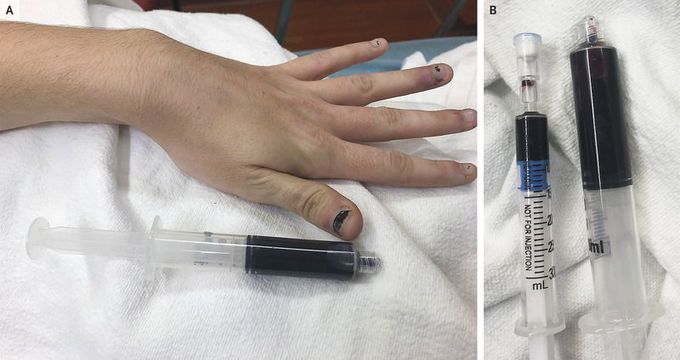


Acquired Methemoglobinemia
A 25-year-old woman presented to the emergency department with a 1-day history of generalized weakness, fatigue, shortness of breath, and skin discoloration. She had a respiratory rate of 22 breaths per minute and an oxygen saturation of 88% while breathing ambient air. The oxygen saturation value displayed on the pulse oximeter did not improve with the administration of supplemental oxygen. The patient appeared cyanotic (Panel A), and she had dark arterial and venous blood (Panel B, smaller tube and larger tube, respectively). Measurements of arterial blood gases included a partial pressure of arterial oxygen of 120 mm Hg and a calculated oxygen saturation of 100%; however, when measured by CO-oximetry, the oxygen saturation was 67%. The percentage of methemoglobin was 44%. She was treated with intravenous methylene blue and had considerable improvement in her breathing and reduction in skin discoloration. She reported having used large amounts of topical benzocaine the night before for a toothache. Methemoglobinemia can occur after exposure to a number of medications, including topical anesthetic agents such as benzocaine, through metabolic pathways that appear to vary from person to person, which may account for the unpredictability of this complication. The patient had complete resolution of her symptoms, and she was referred for outpatient dental follow-up.




